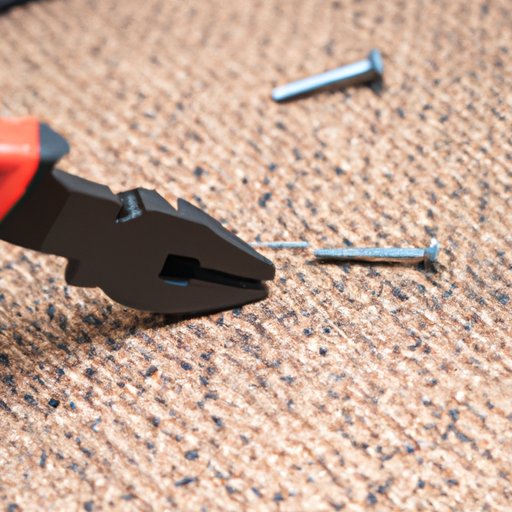
How to Get a Broken Screw Out: A Step-by-Step Guide
Dealing with a broken or stuck screw can be an extremely frustrating and time-consuming problem. It can also cause damage to the surrounding materials if not addressed quickly. In this article, we will explore various methods of removing stuck screws. By following these simple yet effective techniques, you can save time and effort while also saving your materials from further damage.
Grip and Twist Method
The grip and twist method is one of the simplest ways to remove a stuck screw. All you need is a rubber band or elastic band that can provide grip and leverage. Start by placing the elastic band over the top of the screw head. Then, using your screwdriver, place the tip into the screw head and press down firmly. Begin to turn the screwdriver in a counterclockwise motion. The elastic band should provide a good grip, allowing you to remove the screw with minimal effort.
Pliers or Wrenches Method
If the elastic band method does not prove successful, another option is to use a pair of pliers or wrenches. The pliers or wrenches can provide additional leverage to help you remove the screw. Start by selecting a set of pliers or wrenches that are the proper size to grip the screw head. Next, using the pliers or wrenches, grip the screw head firmly and begin to turn it counterclockwise. With enough force, the screw should begin to loosen and can be removed easily.
Screwdriver or Drill Method
If the screw is still stuck, another method to try is creating a notch in the screw head. To do this, use a screwdriver or drill to create a notch in the center of the screw head. This notch will provide better grip, allowing you to apply more force to the screw and remove it. Once the notch has been created, use the screwdriver or drill to turn the screw counterclockwise until it comes loose.
Heat Method
Applying heat to the screw can also help loosen it. There are different methods for applying heat to the screw, including using a hairdryer, heat gun, or even a candle flame. Start by heating the screw for several minutes. The heat will cause the metal to expand, making it easier to remove the screw. Once the screw has been heated, use pliers or a wrench to turn it counterclockwise and remove it.
Extractor Tool Method
Extractor tools are designed specifically for removing stuck screws. They are available at most hardware stores and can be extremely useful in situations where other methods have failed. Start by selecting the correct size extractor tool for the screw. Next, insert the tool into the screw and begin to turn it counterclockwise. The tool will grip the screw, allowing you to remove it without causing any damage.
Household Items Method
Common household items can also be used to remove stuck screws. Vinegar, WD-40, and baking soda paste are all effective options. Start by applying the substance to the screw head and allowing it to sit for several minutes. The substance will help to loosen the screw, making it easier to remove. Once the substance has been applied, use pliers or a wrench to turn the screw counterclockwise and remove it.
Last Resort: Drill It Out
If all else fails, it may be time to accept defeat and drill out the screw. Start by selecting a drill bit that is smaller than the diameter of the screw. Then, use the drill to create a hole in the center of the screw. Once the hole has been created, switch to a drill bit that is slightly larger than the diameter of the screw. Continue drilling until the screw comes loose.
Conclusion
Removing stuck screws can be a frustrating and time-consuming problem, but with the right tools and techniques, it can be a breeze. By following the methods outlined in this article, you can avoid damage to your materials and save both time and effort. Remember to take extra care when dealing with screws and always use the appropriate tools for the job. With these tips and tricks, you’ll be able to tackle any stuck screw with confidence in no time.




